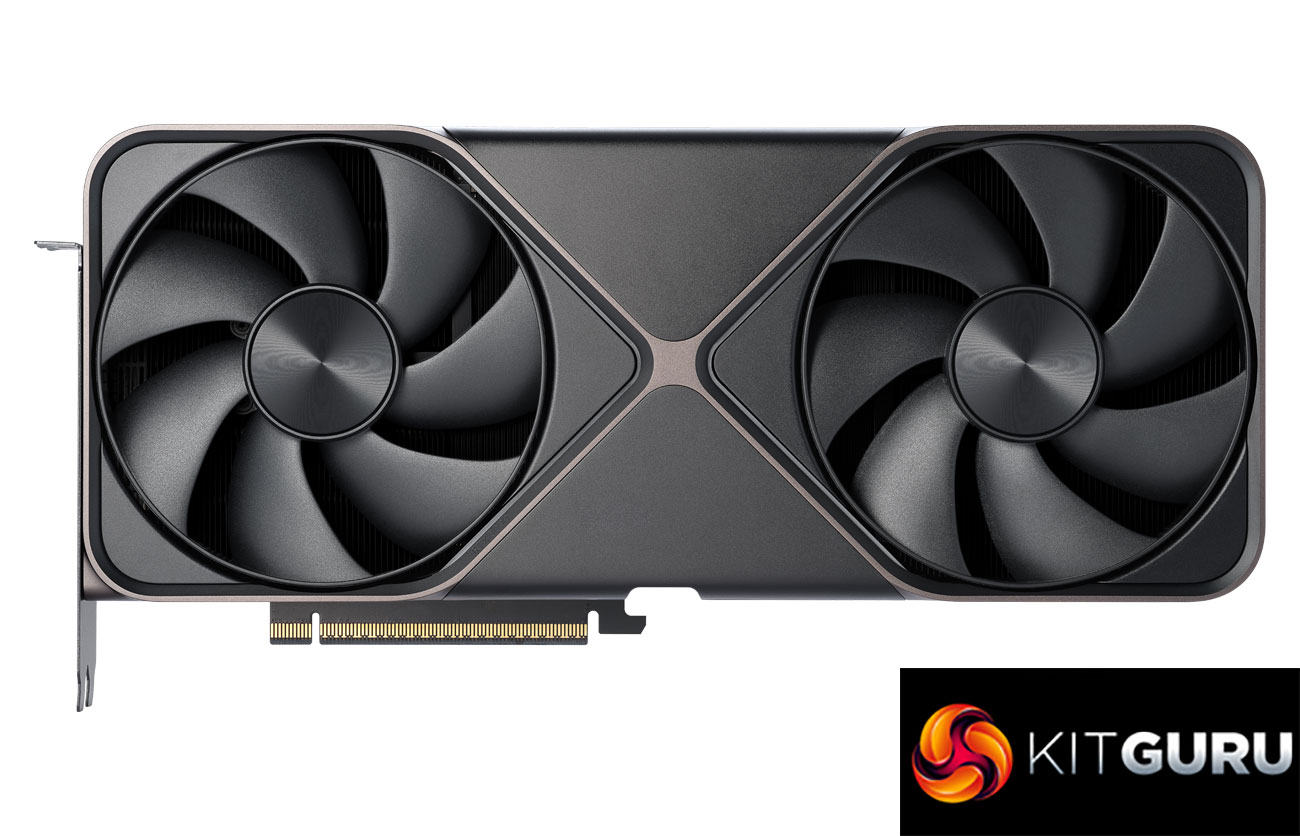After a slightly longer than usual wait, Nvidia's next-generation Blackwell architecture has arrived and it's the flagship RTX 5090 that is leading the way. RTX 5080 is due to land in a week's time at a slightly more attainable £979 asking price, but today's review is all about the £1939 behemoth that is Nvidia's RTX 5090.
Much was made of the performance ahead of launch, people were breaking out rulers and pixel counting Nvidia's bar charts, but after thorough testing today we can confirm native rendering performance has increased in the ballpark of 30% over the RTX 4090 when testing at 4K. That makes the RTX 5090 64% faster on average compared to AMD's current consumer flagship, the RX 7900 XTX, while it's a 71% uplift over the RTX 4080 Super. Ray tracing also scales similarly, given we saw the exact same 29% margin over the RTX 4090 in the eight RT titles we tested.
Those are the sort of performance increases you can expect at 4K, but the uplift does get progressively smaller as resolution decreases. Versus the RTX 4090, for instance, we saw more limited gains of 22% at 1440p and 18% at 1080p. Now, I don't expect many people will be gaming at native 1080p on an RTX 5090, but it's worth bearing that in mind if you'd typically game with DLSS Super Resolution. After all, using its performance mode at 4K utilises a 1080p internal render resolution. Clearly this is a card designed for 4K – and perhaps even above – but that performance scaling at lower resolutions could be something to bear in mind.
Of course, whether or not you are impressed by those generational gains depends entirely on your perspective – an extra 30% over the 4090 could sound great, or it could be a disappointment. The main thing from my perspective as a reviewer is to give you, the reader, as much information as possible to allow you to make an informed decision, and I think I have done that today.
However, it's certainly fair to say the uplift gen-on-gen is smaller than what we've come to expect in this market segment. The RTX 3090 proved about 50% faster than the 2080 Ti, for instance, while the RTX 4090 was more like 80% faster than the RTX 3090 and 60% ahead of the RTX 3090 Ti. That does make the 30% gain seem less impressive, but do we need to adjust our expectations? It's no secret that each new node is getting more and more expensive to manufacture, with technological advancements getting harder and harder to come by.
It would certainly seem the lack of a node shrink is the limiting factor for the RTX 5090, with Blackwell remaining on TSMC's N4 process. That means, to get the extra performance, Nvidia increased die size by 23% over AD102, adding in 33% more cores, while also making the change to GDDR7 memory. Perhaps most eye-catching is the increased Total Graphics Power, hitting an eye-watering 575W, a 28% increase over the RTX 4090's 450W TGP.
In practice, we saw 4K power draw averaging 515W at 4K, though several games do get very close to that 575W figure. Power also tends to go up when ray tracing is enabled, where we recorded an average of 546.3W over the eight RT titles tested. As such, the increase in power draw is actually larger than the increase to performance, resulting a performance per Watt regression – certainly not something I was expecting to see! How much you care about that is entirely up to you, but considering the strides Nvidia usually makes in terms of efficiency gen-on-gen, this is certainly going to raise an eyebrow or two.
The same can also be said for pricing. At £1939/$1999, it is certainly not for the faint of heart, but I'm also not sure the target audience will care too much. Sure, it's an extra £300-400 over the RTX 4090, but the way I see it, anyone buying this sort of product either wants the outright fastest gaming GPU possible, or it's for professional use in which case the extra compute power will pay for itself over time. The reality is that Nvidia simply has no competition in this space so they can charge what they like – because if you want the best of the best, this is it, so be prepared to pay for the privilege.
Gamers do get the extra value add of DLSS 4, specifically Multi Frame Generation (MFG), which is a new feature exclusive to the RTX 50 series. I spent a fair bit of time testing MFG as part of this review and I think if you already got on with Frame Generation on the RX 40-series, you'll probably find a lot to like with MFG. It's been particularly useful in enabling 4K/240Hz gaming experiences that wouldn't otherwise be possible – such as high frame rate path tracing in Cyberpunk 2077 – and with the growing 4K OLED monitor segment, that's certainly good news.
However, it's definitely not a perfect technology as the discerning gamer will still notice some fizzling or shimmering that isn't otherwise there, while latency scaling is still backwards compared to what we've come to expect – in the sense that latency actually increases as frame rate increases with MFG, rather than latency decreasing. That means some will find it problematic as the feel doesn't always match up to the visual fluidity of the increased frame rate.
It is great to see Nvidia is improving other aspects of DLSS, though, with its new Transformer-based models of Super Resolution and Ray Reconstruction. Not only do these improve things like ghosting and overall level of detail compared to the previous Convolutional Neural Network (CNN) model, but this upgrade actually applies to all RTX GPUs, right the way back to the 20-series. There's even a possibility that Multi Frame Gen might come to older cards given that Nvidia hasn't explicitly ruled it out, but personally I'd be surprised to see that happen given it currently acts as an incentive to upgrade to the latest and greatest.
We can't end this review without a discussion of Nvidia's Founders Edition design, either. This is a highly impressive feat of engineering, considering it's a mere dual-slot thickness yet it is able to comfortably tame 575W of power. We saw the GPU settling at 72C during a thirty-minute 4K stress test, while the VRAM hit 88C, which is slightly warmer but still well within safe limits. I love to see the innovation in this department as, when pretty much every AIB partner is slapping quad-slot coolers onto their 5090s, this is a refreshing step back to a time when GPUs didn't cover the entire bottom-half of your motherboard.
Overall then, I do think the RTX 5090 is a solid card. Yes, there are some valid concerns around pricing and power draw increases, but I just don't think the target audience for this card will be particularly bothered – it's ultimately all about the increased performance, and while circa 30% gains won't blow your mind like the jump from an RTX 3090 to the RTX 4090, it's still a decent generational uplift considering that Moore's Law, if not completely dead, is certainly well out the door. It does remain to be seen how performance will scale as we head down the 50 series stack, though, where it's not always possible to pump core counts and power draw by 30% – but for that analysis, we will have to wait and see what the likes of the RTX 5080 and RTX 5070 can bring to the table.
One final note on availability, we've been told by a couple UK retailers to expect an incredibly tight supply at launch, with demand set to far outstrip what is actually available. Matters are complicated by the fact Chinese New Year is just around the corner, so it could take several weeks for things to improve. As a reminder, the retail launch is set for January 30th.
Discuss on our Facebook page HERE.
Pros
- It's the new fastest consumer GPU, with circa 30% gains over the RTX 4090.
- Dual-slot Founders Edition is an incredible feat of engineering.
- Huge 32GB GDDR7 frame buffer.
- DLSS 4 has improved Ray Reconstruction and Super Resolution scaling.
- Multi Frame Generation enables higher frame rates than would otherwise be possible.
Cons
- Incredibly expensive at £1939.
- Very high power demands.
- Performance per Watt is actually a step back compared to the RTX 4090 and RTX 4080 Super.
- Some may be disappointed with the raw performance uplift.
KitGuru says: The RTX 5090 sets a new performance standard by pushing both price and power consumption higher than ever. It's clearly only targeting a certain niche, but if you want the best of the best – this is it.
 KitGuru KitGuru.net – Tech News | Hardware News | Hardware Reviews | IOS | Mobile | Gaming | Graphics Cards
KitGuru KitGuru.net – Tech News | Hardware News | Hardware Reviews | IOS | Mobile | Gaming | Graphics Cards




